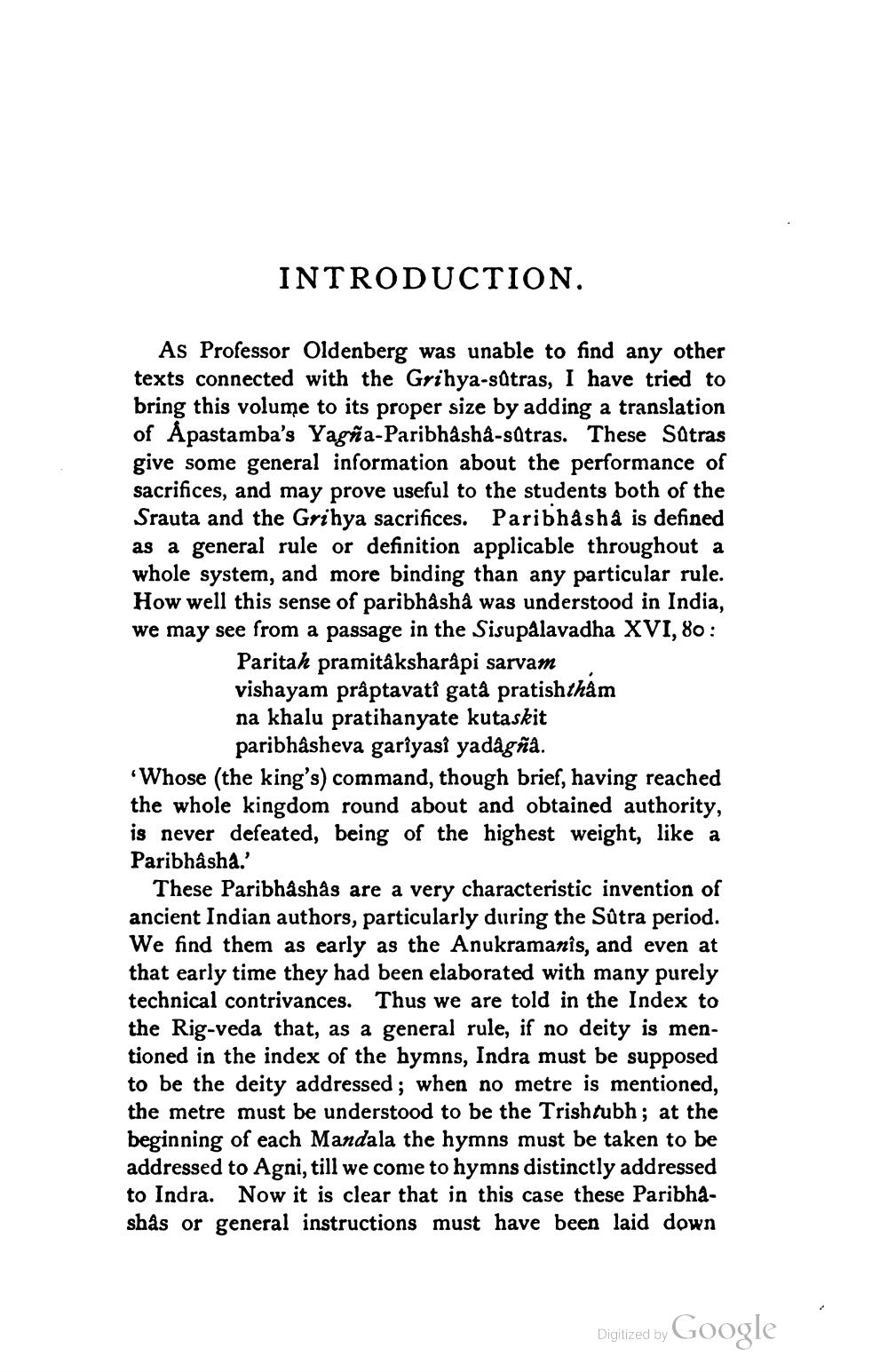________________
INTRODUCTION.
As Professor Oldenberg was unable to find any other texts connected with the Grihya-sûtras, I have tried to bring this volume to its proper size by adding a translation of Åpastamba's Yagña-Paribhâshâ-sûtras. These Sûtras give some general information about the performance of sacrifices, and may prove useful to the students both of the Srauta and the Grihya sacrifices. Paribhashâ is defined as a general rule or definition applicable throughout a whole system, and more binding than any particular rule. How well this sense of paribhâshâ was understood in India, we may see from a passage in the Sisupâlavadha XVI, 80: Paritah pramitâksharâpi sarvam vishayam prâptavatî gatâ pratishtham na khalu pratihanyate kutaskit paribhâsheva garîyasî yadâgñâ.
'Whose (the king's) command, though brief, having reached the whole kingdom round about and obtained authority, is never defeated, being of the highest weight, like a Paribhâsha.'
These Paribhashâs are a very characteristic invention of ancient Indian authors, particularly during the Sûtra period. We find them as early as the Anukramanis, and even at that early time they had been elaborated with many purely technical contrivances. Thus we are told in the Index to the Rig-veda that, as a general rule, if no deity is mentioned in the index of the hymns, Indra must be supposed to be the deity addressed; when no metre is mentioned, the metre must be understood to be the Trishtubh; at the beginning of each Mandala the hymns must be taken to be addressed to Agni, till we come to hymns distinctly addressed to Indra. Now it is clear that in this case these Paribhâshâs or general instructions must have been laid down
Digitized by
Google




